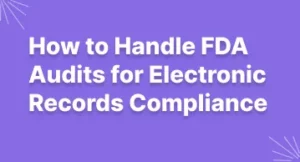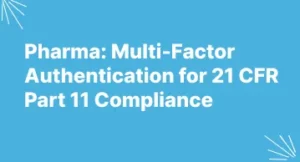How to Sign Contracts Online – A Comprehensive Guide
In today’s digital age, almost every aspect of business and personal life has been transformed by technology. One significant transformation is the way we sign contracts. The days of printing, signing, and scanning contracts are fading into history as more businesses and individuals embrace the convenience and efficiency of online contract signing. This blog post will explore the nuances of online contract signing, from its advantages and best practices to the emerging trends, legal considerations, and crucial aspects of compliance.
I. Introduction
The Digital Revolution and Its Impact on Contract Signing
In recent years, the digital revolution has disrupted traditional business practices and brought about a fundamental change in the way contracts are signed. Paper-based contracts, with their cumbersome back-and-forth exchanges, are being replaced by online contract signing methods that are not only faster and more efficient but also more secure.
Importance of Signing Contracts Securely and Efficiently
Contracts are the cornerstone of legal agreements, whether they’re for business transactions, employment, or personal matters. Ensuring the security and authenticity of contracts is paramount. In the following sections, we’ll delve into the smart way of signing contracts online, and how it’s not just convenient but also safe.
Overview of the Blog’s Structure
To provide a comprehensive guide on online contract signing, we’ll explore various aspects, from the transition from traditional to online methods to the emerging trends and legal considerations. Let’s begin by comparing the traditional and online approaches.
II. The Traditional vs. Online Contract Signing
The Traditional Paper-Based Contract Signing Process
For decades, the process of signing contracts involved the physical exchange of documents, wet signatures, and sometimes even notary services. This approach, while familiar, has several drawbacks, including inefficiency, delays, and a substantial environmental footprint.
Advantages of Moving Contracts Online
The shift to online contract signing comes with a range of advantages. Notable benefits include expedited contract execution, cost savings, and a reduced risk of errors. Online signing also allows parties to sign contracts from anywhere in the world, breaking down geographical barriers.
Risks and Challenges Associated with Online Contract Signing
However, this transition is not without its challenges. Cybersecurity risks, the potential for disputes, and concerns about the legality of electronic signatures are all important considerations. This blog post will address these challenges in depth.
Legal Validity and Regulations
One of the primary concerns with online contract signing is whether it holds the same legal weight as traditional pen-and-paper signatures. The answer is yes, thanks to the legal recognition of electronic signatures. In the subsequent sections, we’ll explore the tools and technologies that enable secure online contract signing.
III. Tools and Technologies for Online Contract Signing
E-signatures and Their Legality
Electronic signatures, commonly referred to as e-signatures, play a pivotal role in online contract signing. They are recognized as legally binding in most jurisdictions around the world, provided they meet certain criteria, such as intent, consent, and a clear record of the signing process.
Secure Online Platforms for Contract Signing
Numerous online platforms and software solutions are available to facilitate online contract signing. These platforms provide a secure environment for drafting, sending, and signing contracts while ensuring compliance with legal requirements.
Choosing the Right Software and Service Providers
Selecting the appropriate software and service providers is critical. Not all e-signature solutions are created equal, and businesses must consider factors such as user-friendliness, scalability, integration capabilities, and, most importantly, security.
Mobile Applications for Contract Signing on the Go
In our fast-paced world, the ability to sign contracts on the go is becoming increasingly important. Mobile applications that are user-friendly and secure make it possible to sign contracts from a smartphone or tablet.
IV. Best Practices for Secure Online Contract Signing
Authentication and Identity Verification
Ensuring the identity of the signing parties is a fundamental aspect of secure online contract signing. Robust authentication methods, like two-factor authentication, help establish the validity of signatures.
Encryption and Data Security
Protecting the confidentiality and integrity of the contract content is paramount. Encryption and data security measures are essential to safeguard sensitive information during transmission and storage.
Audit Trails and Document Tracking
Online contract signing platforms maintain detailed audit trails, offering a chronological record of the contract’s creation and signing. This feature enhances transparency and helps resolve disputes.
Access Control and Permissions
Establishing proper access controls and permissions ensures that only authorized individuals can view or modify the contract. These controls help maintain the integrity of the contract.
Compliance with Industry-Specific Regulations
Different industries have unique regulatory requirements for contract signing. Healthcare, finance, and other sectors have specific rules that must be adhered to. Online contract signing solutions should accommodate these specific needs.
V. Tips for a Smooth Online Contract Signing Process
Preparing Contracts for Digital Signatures
Drafting contracts that are ready for digital signatures involves considerations such as format, fields for e-signatures, and clear instructions for the signatories.
Sending Contracts to Multiple Parties
In business transactions, it’s common for contracts to involve multiple parties. Online platforms simplify the process by allowing all parties to sign the same document without the need for physical meetings.
Guidance for Signatories
Signatories may have questions or concerns about the online signing process. Offering clear and user-friendly instructions can help streamline the process and avoid unnecessary delays.
Handling Exceptions and Disputes
Even in a digital environment, disputes can arise. Preparing for exceptions and disputes and having mechanisms in place to resolve them is crucial.
Integrating with Other Business Processes
To maximize the benefits of online contract signing, consider how it can be integrated with other business processes, such as document management and CRM systems.
VI. Emerging Trends in Online Contract Signing
Blockchain Technology and Smart Contracts
The integration of blockchain technology and smart contracts is on the horizon, promising enhanced security and automation in the contract signing process.
Artificial Intelligence and Automation
AI-powered contract management and automation tools are streamlining the entire contract lifecycle, from creation to expiration.
Improved User Experiences and Mobile-First Solutions
Expectations for online experiences are rising. User-friendly interfaces and mobile-first solutions are driving the future of online contract signing.
Future Regulatory Changes
The legal landscape surrounding online contract signing is evolving. Stay updated on changes that may impact your business.
VII. Legal Considerations and Compliance
The legal aspects of online contract signing are of paramount importance. They not only ensure the validity of agreements but also protect the rights and data of all parties involved. In this section, we will delve deeper into the crucial legal considerations and compliance requirements for secure online contract signing.
International Legal Recognition of E-Signatures
Understanding the global recognition of electronic signatures is crucial for businesses with international operations. Many countries have adopted electronic signature laws and regulations, such as the Electronic Signatures in Global and National Commerce (ESIGN) Act in the United States and the eIDAS Regulation in the European Union. These legal frameworks establish the validity of electronic signatures, making them legally equivalent to traditional handwritten signatures.
As a business operating across borders, it’s essential to research and understand the specific e-signature laws in the countries you engage with. Compliance with international e-signature standards ensures that your contracts are legally enforceable and recognized worldwide.
Compliance with GDPR and Other Data Protection Laws
Data privacy and protection laws, such as the General Data Protection Regulation (GDPR), are paramount when handling contracts and personal data. The GDPR, applicable in the European Union, mandates strict guidelines for the collection, storage, and processing of personal data. When implementing online contract signing, it’s essential to consider GDPR requirements, such as obtaining informed consent for data processing, ensuring data security, and providing individuals with the right to access and control their personal information.
Even if your business is not directly subject to the GDPR, adopting GDPR-compliant practices demonstrates a commitment to data protection and can facilitate international business relationships.
Industry-Specific Regulations (e.g., Healthcare, Finance)
Certain industries have specific regulations related to contract signing. Healthcare, for instance, is governed by the Health Insurance Portability and Accountability Act (HIPAA) in the United States, which places strict requirements on the handling of medical data. Similarly, the financial sector has its own set of regulations, such as the Sarbanes-Oxley Act (SOX) and the Dodd-Frank Wall Street Reform and Consumer Protection Act.
Compliance with industry-specific rules is mandatory to avoid legal repercussions and maintain the trust of clients and partners. When implementing online contract signing in regulated industries, it’s essential to ensure that your chosen platform or solution meets the specific compliance requirements of your sector.
VIII. Challenges and Risks
Cybersecurity Threats and Data Breaches
As online contract signing grows, so do the risks of cyberattacks and data breaches. It’s essential to implement robust security measures to mitigate these threats. This includes encryption of data in transit and at rest, regular security audits, and employee training on security best practices. A breach not only jeopardizes sensitive contract information but can also lead to legal liabilities.
Ensuring the Authenticity of Online Signatures
Verifying the authenticity of online signatures is a concern that must be addressed, especially in high-stakes contracts. Implementing multi-factor authentication and ensuring that e-signature platforms have robust identity verification mechanisms can mitigate this risk.
Resolving Disputes in a Digital Environment
Disputes that arise from online contracts may require unique solutions. Having a clear dispute resolution process outlined in your contracts and using platforms that provide comprehensive audit trails can help expedite dispute resolution.
Staying Updated with Changing Laws and Regulations
The legal landscape around online contract signing is continually evolving. Businesses must stay informed about these changes to remain compliant. Subscribing to legal updates and seeking legal counsel when needed can help businesses navigate the ever-changing legal landscape.
IX. Conclusion
In conclusion, the smart way to sign contracts online has transformed the world of contracts, making them more efficient and secure than ever before. By embracing e-signatures, secure platforms, and best practices, individuals and businesses can enjoy the benefits of a streamlined process. However, staying informed about emerging trends, ensuring legal compliance, and addressing the unique requirements of different industries are crucial steps in the evolving landscape of contract signing. As technology continues to advance, it’s evident that the future of contract signing will be smarter, more efficient, and more secure than ever.
In this comprehensive guide, we’ve covered everything you need to know about signing contracts online, making the process efficient, secure, and legally compliant. If you’re ready to experience the future of contract signing for yourself, we invite you to explore the possibilities with MSB Docs.
Book a Demo or Try It for Free: Whether you’re a business professional, a legal expert, or anyone seeking a hassle-free way to sign contracts online, MSB Docs can provide you with the tools and expertise you need. Book a personalized demo to see our platform in action or take advantage of our free trial to experience the convenience and power of online contract signing firsthand.
Don’t miss out on the opportunity to streamline your contract management and elevate your business agreements. Get started with MSB Docs today!
FAQs
1. Are electronic signatures legally binding worldwide?
Yes, in many countries, electronic signatures are legally binding. However, the specific laws and regulations may vary by jurisdiction. It’s essential to understand the legal requirements in your region.
2. What is the difference between an electronic signature and a digital signature?
An electronic signature is a broad term encompassing various methods of signing digitally, while a digital signature is a specific type of electronic signature that uses encryption to verify the document’s integrity and the signer’s identity.
3. How can I ensure the security of online contract signing?
To ensure the security of online contract signing, you should choose a reputable e-signature platform with robust security measures in place, such as data encryption, audit trails, and identity verification.
4. Can I sign contracts online from my mobile device?
Yes, many e-signature solutions offer mobile applications, making it possible to sign contracts securely from your smartphone or tablet.
5. What are the key considerations when implementing online contract signing for my business?
When implementing online contract signing for your business, key considerations include selecting the right e-signature software, ensuring compliance with industry-specific regulations, and having clear procedures for handling exceptions and disputes.





